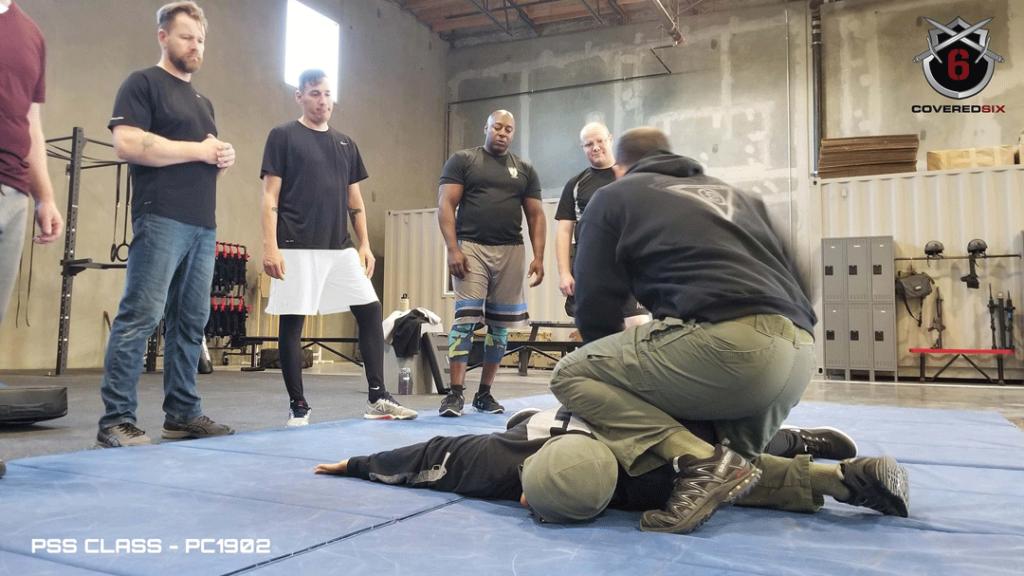
IT networking uses protocols to send and get data. These protocols are based in two distinct processes: SENDER (which is always running) and RECEIVER (which is always running). A packet is sent by the SENDER from the RECEIVER to the RECEIVER. The packet then becomes a frame. The RECEIVER then receives the frame. Its basic structure can be viewed here:
STAR TOPOLOGY
Star topology is a popular it networking solution. This network design allows for multiple devices to be linked using a single core. If you have multiple locations within your office and want to increase the number of devices connected to the internet, a star topology can be a good option. However, there are some drawbacks. Some PCs are unable to be connected via star topology. Most central hub ports also don't allow internet connectivity.

DATA LINK LAYER
The Data-Link Layer (DLL), which is an integral part of IT networking, plays a crucial role. The DLL regulates data transmission by dividing Bitdatenstroms up into blocks, adding checksums for channels, and making sure no frame is lost. It also manages data transmission speed, error tolerance, and other aspects. It also manages data transmission in order to make both the sender as well as the receiver happy.
TRANSMISSION Media Layer
It networking uses the Transmission Media Layer (TML), which is the physical layer that controls transmission media. Transmission media is the actual channel that allows data to travel between locations. The most common example of transmission media is by air. A written message would be carried by a carrier and delivered via airplane. Different types of wires, waves and electromagnetic energy are used to transmit data simultaneously.
REDUNDANCY
A redundant network is essential if you are to create a fast IT environment that benefits your employees, customers, and operations. Reliable networks with low latency and high reliability give you the ability to innovate. Your IT environment is only as strong as your network. A strong network is key to a client-focused experience. So what exactly is REDUNDANCY and networking?
SWITCHES
There are many types IT networking switches. The most important feature of each type is its ability transmit packets. An unmanaged switch uses automatic-negotiation of Ethernet devices to obtain the highest data rate. It can either operate in full-duplex mode or in half-duplex mode, depending on your needs. However, if you're using a managed switch to connect to your network, you'll want to look for a managed switch that allows you to configure its ports and monitor its performance.

POINT OF CONNECTION CENTRAL
What is the CENTRAL CONNECTION POST in IT networking. A central connection point is what allows all computers to be connected to one another. A router is usually connected to a modem that provides Internet access to all connected devices. The other types of central connection points are switches and hubs. Before any data can travel to the destination node they must first pass through the central link point.
FAQ
What is an IT job salary per month?
The average salary of an Information Technology professional in Britain is PS23,000 annually. This includes salary and bonus. A typical IT Professional would make approximately PS2,500 per month.
However, some IT professionals are lucky enough to receive a salary of over PS30,000 per year.
It is generally agreed upon that an individual needs to have 5-6 years of experience before they can earn decent money in their chosen profession.
What jobs are available in information technology?
For those who want to be IT-related professionals, the most popular career options are software developer, database administrator (network engineer), systems analyst, web designer/developer and help desk support technician. There are many other IT careers, such as data entry clerks, sales representatives, receptionists, customer service specialists, programmers, technical writers, graphic artists, office managers, project managers, and others.
Many people get their start in the field as soon as they graduate from college. You might get an internship in a company while you are studying. Or, you might choose to take part in a formal apprenticeship. This will allow you to gain hands-on work experience by working under supervision.
Information Technology has many job openings, as mentioned previously. Many positions require a master's degree. However, not all jobs require this level of education. A master's degree in Computer Science (MSc) or Software Engineering (SSE), for example, will give you better qualifications than a bachelor’s degree.
Some employers prefer applicants with prior experience. Ask your IT friend if they have any experience in IT. Also, check out job boards online to see if any vacancies exist. You can search for a specific location, industry sector or type of role.
If you are looking for a job, consider using specialist sites such as Monster.com. Simply Hired.com. Career Builder. You might also consider joining professional associations like the American Society for Training & Development(ASTD), the Association for Computing Machinery(ACM), and the Institute of Electrical and Electronics Engineerss (IEEE).
Is it worth the Google IT certificate?
Google IT certification (recognized by the industry) is a credential for web designers and developers. It shows employers that the candidate is ready to tackle large-scale technical challenges.
The Google IT certification is a great way to show off your skills and prove your commitment to excellence.
Google will also provide you with access to special content, such as updates to developer documentation and answers frequently asked questions.
Google IT certifications can be obtained online or offline.
How do I prepare for my certification exams?
There are many methods to prepare. You can study the entire syllabus before you sit for the exam. Another option is to read the entire content of the exam guidebook before sitting the exam. A few questions can be attempted to assess your understanding of the material. Finally, you could join a local community college where you can interact with students who have already taken the same certification exam.
Many websites offer free exam preparation materials. Although you can purchase the exam manual electronically, only one copy will be sent to you. You should save the exam manual on a CD/DVD.
Some companies even offer self-study guides. These guides typically cost $100-$400. They often come with additional features, such as flashcards or quizzes. You can even take the exam online with some of these products.
What should I look for when choosing a cyber security course?
There are many cyber security courses that you can choose from, including short and long-term courses as well as full-time courses. What should you look out for when choosing which course to take? These are some of the things you should consider:
-
Which certification level would you like? Some courses give certificates upon successful completion. Others award diplomas or degrees. While certificates can be more difficult to obtain, degrees and diplomas are generally more desirable.
-
What number of weeks/months are you able to dedicate to the course? Most courses run for around 6-12 weeks, although some are longer.
-
Do you prefer face-to–face interaction or distance-learning? While face-to-face classes are great for meeting other students, they can also be costly. Distance learning allows you the freedom to work at your pace and avoids travel costs.
-
Are you looking for a job change? Or just a refresher course? Some career changers may not have the time or desire to change their job. Others might find that a quick course will suffice to refresh and improve their skills. Others might simply want to refresh their knowledge before applying for a job.
-
Is the course approved? Accreditation assures that a course's reliability and credibility. Accreditation guarantees that your money will not be wasted on courses that do not deliver the results you expected.
-
Does the course include internships or placements? Internships give you the opportunity to apply what's been learned and work with IT professionals. Placements are a great way to gain hands-on experience and work with experienced cybersecurity professionals.
Do you think cybersecurity requires a lot of math skills?
It is an essential part of our business, and it won't be changing anytime soon. But as technology evolves, we have to keep up with it and make sure we are doing everything possible to protect ourselves against cyber-attacks.
This includes finding ways that systems can be secured without being bogged down in technical details.
Also, this must be done while ensuring that our costs are under control. These issues are constantly being improved upon.
We can miss out opportunities, make revenue mistakes, cause harm to our customers and even risk people's lives if it goes wrong. We must ensure that we use our time wisely.
Therefore, we must be mindful that we are not focusing too much on cybersecurity.
This is why we have a dedicated team that focuses on this problem. We call them 'cybersecurity specialists' because they understand exactly what needs to be done and how to implement those changes.
Statistics
- The median annual salary of computer and information technology jobs in the US is $88,240, well above the national average of $39,810 (bls.gov).
- The number of IT certifications available on the job market is growing rapidly. According to an analysis conducted by CertifyIT, there were more than 2,000 different IT certifications available in 2017,
- The global IoT market is expected to reach a value of USD 1,386.06 billion by 2026 from USD 761.4 billion in 2020 at a CAGR of 10.53% during the period 2021-2026 (globenewswire.com).
- The top five companies hiring the most IT professionals are Amazon, Google, IBM, Intel, and Facebook (itnews.co).
- The top five regions contributing to the growth of IT professionals are North America, Western Europe, APJ, MEA, and Central/Eastern Europe (cee.com).
- The IT occupation with the highest annual median salary is that of computer and information research scientists at $122,840, followed by computer network architects ($112,690), software developers ($107,510), information security analysts ($99,730), and database administrators ($93,750) (bls.gov).
External Links
How To
What are the best ways to learn information technology skills?
No experience is necessary - you can simply take courses to learn the basics. Most people who want the career of a techie don't know any technical terms. They just assume that they'll be able to learn things as they go. It is much more beneficial to start with material that assumes minimal knowledge and work your way up.
This is a way to learn by doing rather then reading. This approach lets you focus on what you want to achieve rather than wasting time on irrelevant details.
You may be unable to complete your first course because you are getting too detailed. Don't be discouraged. Keep going until you've finished the course and then move on to another one.
Remember that practice is the best way learn. Repeating things until you understand them is the best way to learn. If you spend hours perfecting a single part of a program you will find it difficult to concentrate on the rest. Test out other programs to determine which one is best for you.
Also, ensure you practice using software for real tasks, such as data entry, filing, etc. It is essential that you practice using real-world examples in order to be able to use the information you are learning. They help you understand the why and what you are doing.
Finally, if you are able to afford it, get a book. Many books will be written specifically for beginners, so you'll get all the necessary background information without having to wade through loads of unnecessary detail.
You might find it useful to set goals for yourself if you are learning something new. For example, "by the end the year, I will have completed" a task. By setting small but achievable goals, you'll be more motivated and will feel more inspired to keep going. If you accomplish those targets, it will make you feel proud and fulfilled.
Remember, you're never too old to learn new things. As long as you keep trying, you'll eventually succeed.